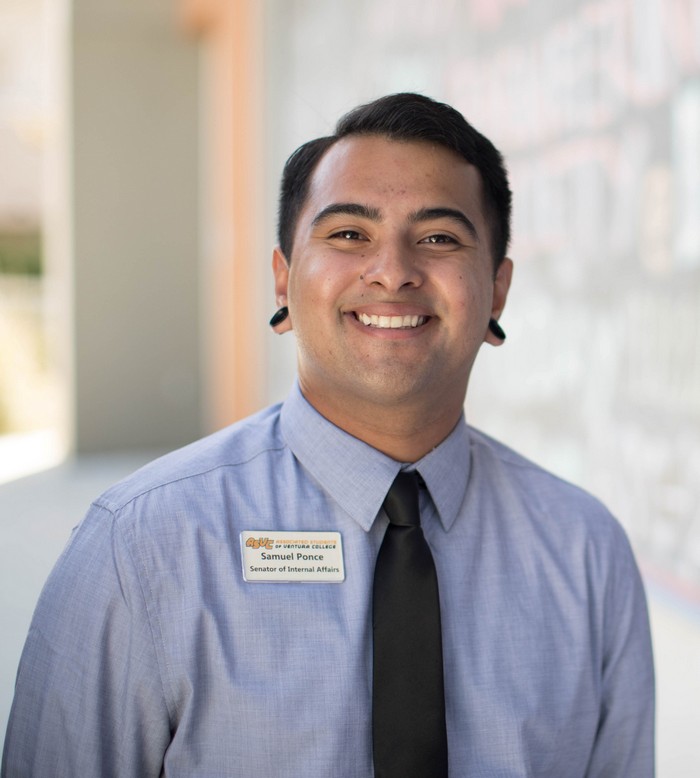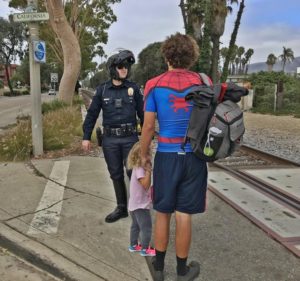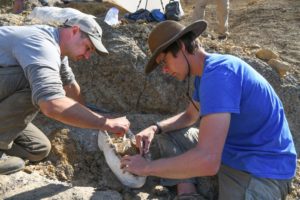by Jill Forman
For the administration and staff of Community Memorial Hospital, the word “community” is more than a name. It’s a philosophy, and a mission.
From local artwork, to a capital campaign that helped fund the project, to giving county residents state of the art medical care and comfort, CMH’s new Ocean Tower represents the hospital’s feeling of being a vital part of Ventura. “We take the name Community to heart,” says Mike Ellingson, VP Marketing and Development, during a media tour on September 25. Joining the tour was Gary Wilde, President and CEO and Adam Thunell, COO, who spearheaded the project. Ellingson says with a laugh, “It’s been my job to keep Adam sane.”
The CMH campus is on the corner of Loma Vista Road and Brent Street in Midtown Ventura, eight acres of medical care facilities. It will include the Ocean Tower for inpatient services, and the older Mountain Tower for outpatient and hospital support services. Existing buildings are the medical office building on Brent Street housing doctors’ offices and Same-Day Surgery, the Coastal Communities Cancer Center, two parking structures with 1094 free parking spaces, and a public park with labyrinth.
The new building was necessitated by three factors: to fulfill seismic requirements, to replace and augment an aging structure built in the 1960’s, and to attract the next generation of physicians with state-of-the-art technology while delivering high-quality care and ensuring patient privacy needs. The cost was $350 million and remained on budget.
The building was “received” on August 28 and full operation is planned for mid-December. Between now and then a remarkable amount of work is taking place. As Ellingson says, “There are trucks rolling in all the time” with supplies and equipment. Staff members are present daily for four months of safety training, stocking supplies, and deciding on work routes; doctors and other team members are training on new technology. The amount of time it will take to complete this was based on the experience of other hospitals.
“A Day in the Life” was a comprehensive training day with 350 staff members; two more are scheduled. As realistically as possible, they ran drills and imagined scenarios, finding problems with systems and methods so they could analyze and correct them ahead of time.
Another huge project is the installation of art, over 500 pieces, by local and regional artists. “We take the name Community to heart,” states Ellingson; “We have a vibrant art community here and want to showcase it.” Some art works have been carefully stored and curated for four years, and now is being mounted. The hospital also plans on working with the Museum of Ventura County to co-create future exhibits.
On to the tour. The facility is spacious and light-filled; over 2000 panes of glass were to bring in natural healing sunlight and showcase the views of ocean and hills. The front garden has a large mosaic that was in an interior garden of the Mountain Tower, and now is incorporated into a fountain at the entrance. Indoor/outdoor dining has terrace seating for 70, landscaped for privacy.
Another privacy improvement is a bay of elevators specifically for patients and staff. They rise from the ER, to Surgery, Labor and Delivery, and Critical Care, vulnerable areas for patients who need confidentiality.
Two floors are for general medical/surgical patients, 60 large private rooms per floor with their own bathroom and shower; couches fold into beds for families who will be encouraged to stay. The floors have central nurses’ stations that are not enclosed, accessible to families. Each room has a computer for staff to use; there will not be equipment in the halls as there is in older facilities. Eleven specialized isolation rooms with antechambers for protective clothing will add to staff and visitor convenience.
Room designers toured the country to find the latest and most efficient room design. Input was also sought from nurses and other staff and changes made.
ICU/CCU combined has 28 beds in private rooms. Seismic bracing can be seen in some of the windows, but it doesn’t block the view or the light. 2,258 braces go 60 feet into bedrock. The seismic mandate included that the building has to be not only standing but serviceable in an earthquake, and the building can function with an instant kickover to internal power sources.
“The challenge in medicine is that as more is done in outpatient settings, patients in hospital are sicker, need more technology. That’s why we needed a larger ER, new cardiac catheterization labs, larger critical care and telemetry floors, and more surgery suites,” Ellingson explains. $100 million of the budget was for equipment, all state of the art with that flexibility.
OB and Pediatrics contains a Level 3 NICU, the highest level, with its own surgery suite on the floor. Pediatrics/Adolescents has 8 beds. Two C-section rooms and a Family Overnight Room complete the full-service department.
10 surgery suites are large and state of the art; CMH is already the busiest surgery center in the county. with multiple video screens for streaming. As Ellingson says, “We have to build in flexibility. Who knows what changes there will be in next 50-60 years; we have to build for the future also without knowing what it will be like. Hospitals will have to adapt.”
There are specialized Cardiac Catheterization rooms, a robotic surgery suite, 2 orthopedic rooms, electrophysiology labs, private rooms for surgeons to meet with families.
The Emergency Department has 37 private treatment rooms, two fully-equipped Trauma bays, and a large waiting area.
On the first floor are the Imaging Wing, the dining areas, and two interior gardens. The Healing Garden is for patients and families; the Respite Garden is for staff and visitors.
As the tour wound down, while answering questions, Ellingson reiterated, “This is really the community’s hospital.”
Councilmember Christy Weir, also on the tour, said, “The city is fortunate to have this addition to our Wellness District; it will be a catalyst not only for the health community but also for the economic wellness of the area.”



